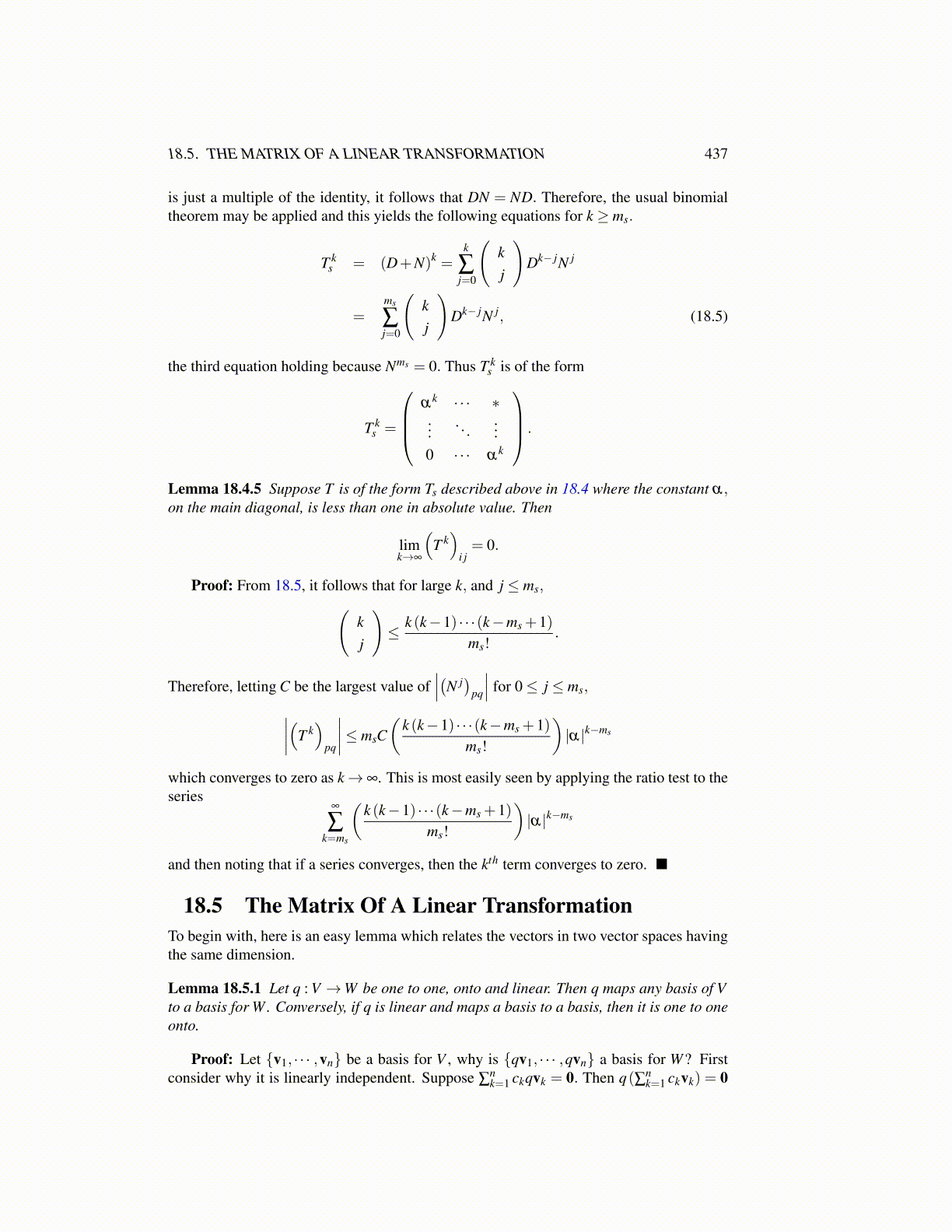
18.5. THE MATRIX OF A LINEAR TRANSFORMATION 437
is just a multiple of the identity, it follows that DN = ND. Therefore, the usual binomialtheorem may be applied and this yields the following equations for k ≥ ms.
T ks = (D+N)k =
k
∑j=0
(kj
)Dk− jN j
=ms
∑j=0
(kj
)Dk− jN j, (18.5)
the third equation holding because Nms = 0. Thus T ks is of the form
T ks =
αk · · · ∗...
. . ....
0 · · · αk
.
Lemma 18.4.5 Suppose T is of the form Ts described above in 18.4 where the constant α,on the main diagonal, is less than one in absolute value. Then
limk→∞
(T k)
i j= 0.
Proof: From 18.5, it follows that for large k, and j ≤ ms,(kj
)≤ k (k−1) · · ·(k−ms +1)
ms!.
Therefore, letting C be the largest value of∣∣∣(N j
)pq
∣∣∣ for 0≤ j ≤ ms,∣∣∣∣(T k)
pq
∣∣∣∣≤ msC(
k (k−1) · · ·(k−ms +1)ms!
)|α|k−ms
which converges to zero as k→∞. This is most easily seen by applying the ratio test to theseries
∞
∑k=ms
(k (k−1) · · ·(k−ms +1)
ms!
)|α|k−ms
and then noting that if a series converges, then the kth term converges to zero. ■
18.5 The Matrix Of A Linear TransformationTo begin with, here is an easy lemma which relates the vectors in two vector spaces havingthe same dimension.
Lemma 18.5.1 Let q : V →W be one to one, onto and linear. Then q maps any basis of Vto a basis for W. Conversely, if q is linear and maps a basis to a basis, then it is one to oneonto.
Proof: Let {v1, · · · ,vn} be a basis for V , why is {qv1, · · · ,qvn} a basis for W? Firstconsider why it is linearly independent. Suppose ∑
nk=1 ckqvk = 0. Then q(∑n
k=1 ckvk) = 0